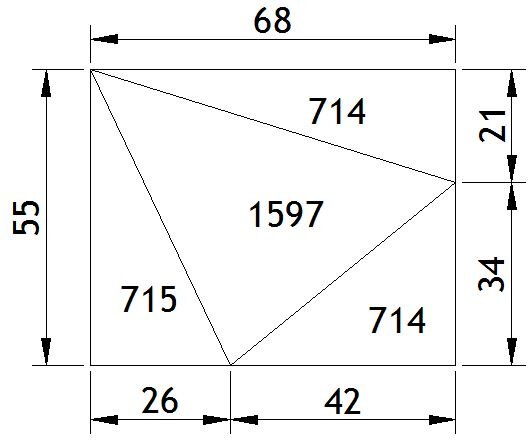To make life easier we can divide each of the areas by two, (as long as we remember to multiply the final answer by two to compensate). The reason this makes things easier is that the areas will then be square numbers, and therefore the lengths of the edges of the squares will be whole numbers, namely 10, 9 and 17.
Consider the area of the triangle in the very centre. Knowing the lengths we can find the area using Heron’s formula:
A^2 = s(s-a)(s-b)(s-c), where s is the semiperimeter (a+b+c)/2
The area works out to be 36.
Now consider the triangle between the top two squares. The area sine rule states that the area of a triangle is half the product of two adjacent sides, multiplies by the sine of the angle in between. At the moment we don’t know the sine of angle a. In fact I have no intention of calculating it!
I’m going to use the fact that the sine of an angle (a) is the same as the sine of 180-a. This is because the sine graph between 0 and 180 forms a symmetrical curve centred on 90. Any two angles adding up to 180 (or to put it another way, averaging 90) will have the same sine.
Now if we look at angles a and b, they are a full 360 less two right angles (the corners of the squares), and so therefore will add up to 180. Sin a = sin b. Angle b is also between two lengths of 10 and 9. We can therefore see that the area of the top triangle is identical to the area of the middle triangle, which we already know to be 36.
We can use the exact same reasoning to show that the other two triangles are also 36.
Therefore the area of the whole hexagon is 100+81+289+(4x36), and not forgetting to double the answer to get the final answer of 1228.















